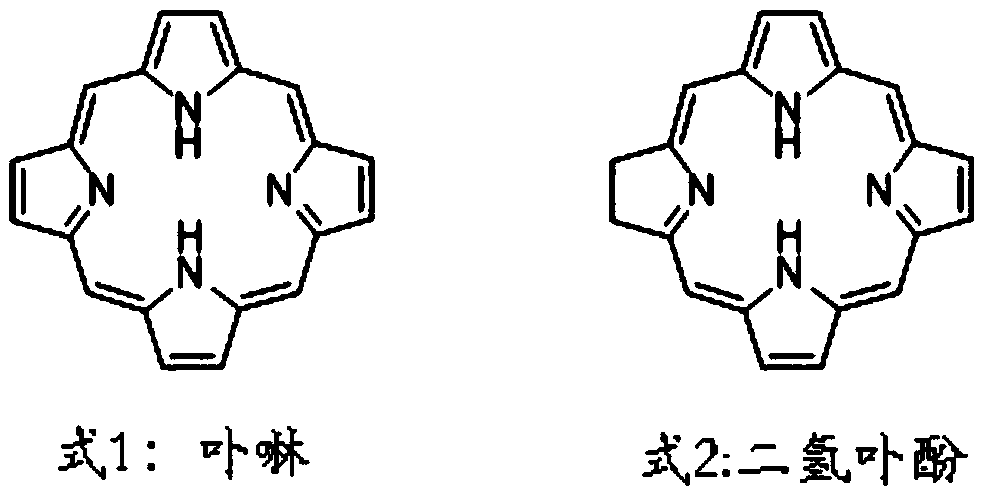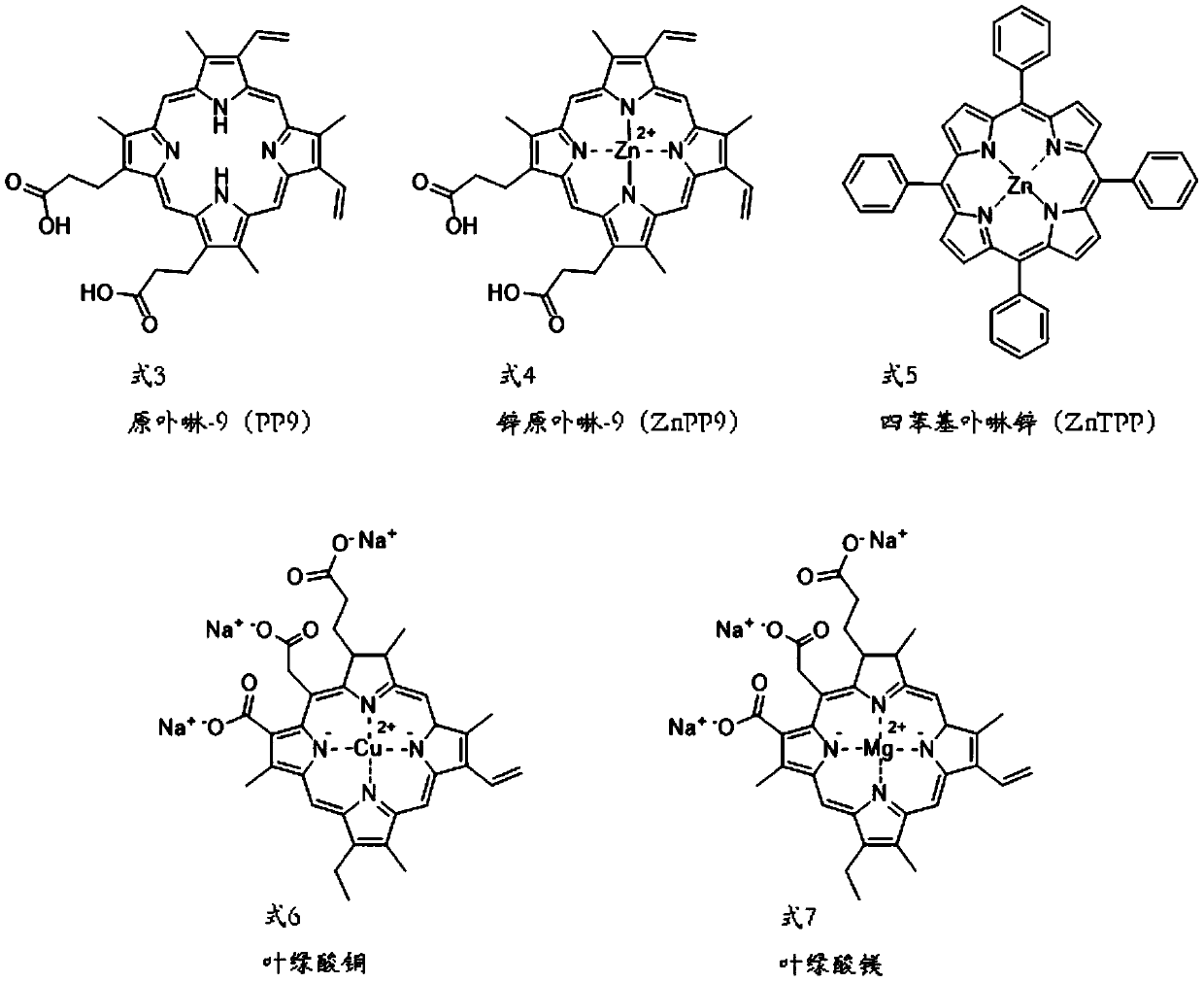Photodynamic inhibition of microbial pathogens in plants
A technology of microorganisms, pathogens, applied in the fields of chemicals for biological control, plant growth regulators, botanical equipment and methods, etc.
- Summary
- Abstract
- Description
- Claims
- Application Information
AI Technical Summary
Problems solved by technology
Method used
Image
Examples
Embodiment 1
[0109] In this example, the application of a porphyrin photosensitizer compound and a chelating agent inhibits the growth of the bacterium (Erwinia amylovora) that causes Fire Blight by using photodynamic inhibition. In particular, magnesium chlorophyllin and disodium EDTA were used and their combination was shown to arrest the growth of Erwinia amylovora.
[0110] Erwinia amylovora grows in liquid media. Samples were incubated with 100 μM magnesium chlorophyllin (with or without 5 mM EDTA disodium) for 30 min and then washed with 395 nm (energy flow of 26.6 J cm -2 ) for 30 minutes of irradiation. Count the CFU of bacteria on the plate. The table below summarizes the results:
[0111] Table 1: Results of relative inactivation of bacteria after PDI treatment
[0112] deal with Relative inactivation, CFU Untreated control - in the dark 1 Untreated control - under light 0.9 Magnesium chlorophyllin (100 μM), EDTA-free (5 mM), in light 1.9 Mag...
Embodiment 2
[0115] In this example, the application of a porphyrin photosensitizer compound and a chelating agent inhibits the growth of the fungal pathogen Alternaria solani through the use of photodynamic inhibition. In particular, magnesium chlorophyllin and disodium EDTA were used and their combination was shown to arrest the growth of Alternaria solani.
[0116] In the experiments, A. solani mycelia were grown in liquid medium for 24 hours. Pellets of mycelia (mean diameter 2 mm) were incubated with 100 μM magnesium chlorophyllin and 0 to 5 mM disodium EDTA for 100 minutes. The sample uses 395nm (the energy flow is 106.6J cm -2 ) was irradiated for 120 minutes, and the radial growth of mycelial plaques on the agar medium was measured after 7 days. Samples were considered dead if no growth was observed after 7 days on the agar plates. The table below summarizes the results:
[0117] Table 2: Results for the percentage of dead A. solani mycelium
[0118] deal with die% ...
Embodiment 3
[0121]In this example, the application of a porphyrin photosensitizer compound and a chelating agent inhibits the growth of the Botrytis cinerea fungus that causes Gray Mold by using photodynamic inhibition. In particular, magnesium chlorophyllin and disodium EDTA were used and their combination was shown to arrest the growth of Botrytis cinerea.
[0122] In the experiments, B. cinerea mycelia were grown in liquid medium for 48 hours. Pellets of mycelia (mean diameter 2 mm) were incubated with magnesium chlorophyllin (with or without 5 mM disodium EDTA) for 100 minutes. The sample uses 395nm (the energy flow is 106.6Jcm -2 ) was irradiated for 120 minutes, and the radial growth of mycelial plaques on the agar medium was measured after 7 days. Samples were considered dead if no growth was observed after 7 days on the agar plates. The table below summarizes the results:
[0123] Table 3: Results for the percentage of dead B. cinerea mycelium
[0124] deal with di...
PUM
| Property | Measurement | Unit |
|---|---|---|
| Diameter | aaaaa | aaaaa |
Abstract
Description
Claims
Application Information
 Login to View More
Login to View More - R&D
- Intellectual Property
- Life Sciences
- Materials
- Tech Scout
- Unparalleled Data Quality
- Higher Quality Content
- 60% Fewer Hallucinations
Browse by: Latest US Patents, China's latest patents, Technical Efficacy Thesaurus, Application Domain, Technology Topic, Popular Technical Reports.
© 2025 PatSnap. All rights reserved.Legal|Privacy policy|Modern Slavery Act Transparency Statement|Sitemap|About US| Contact US: help@patsnap.com



